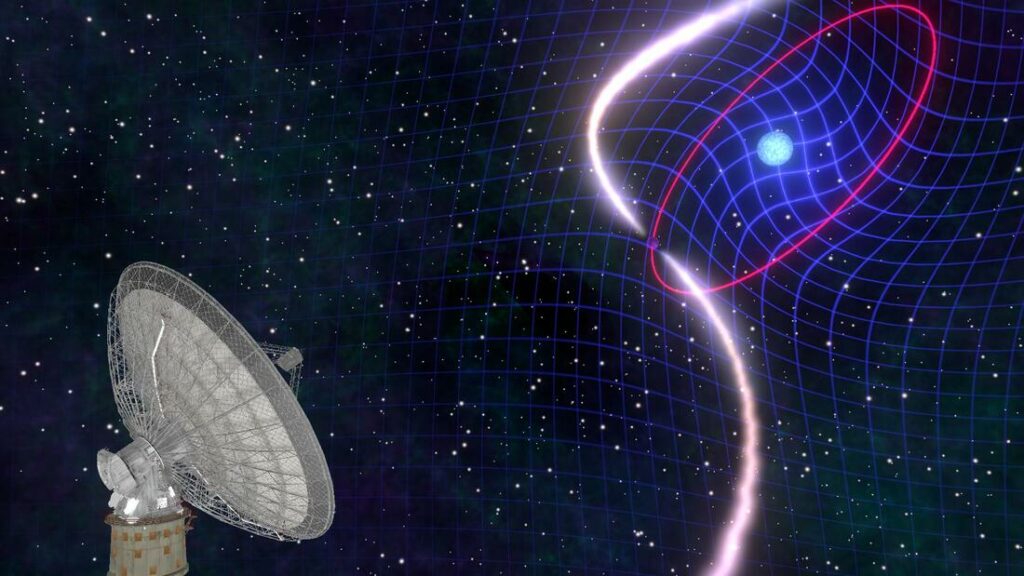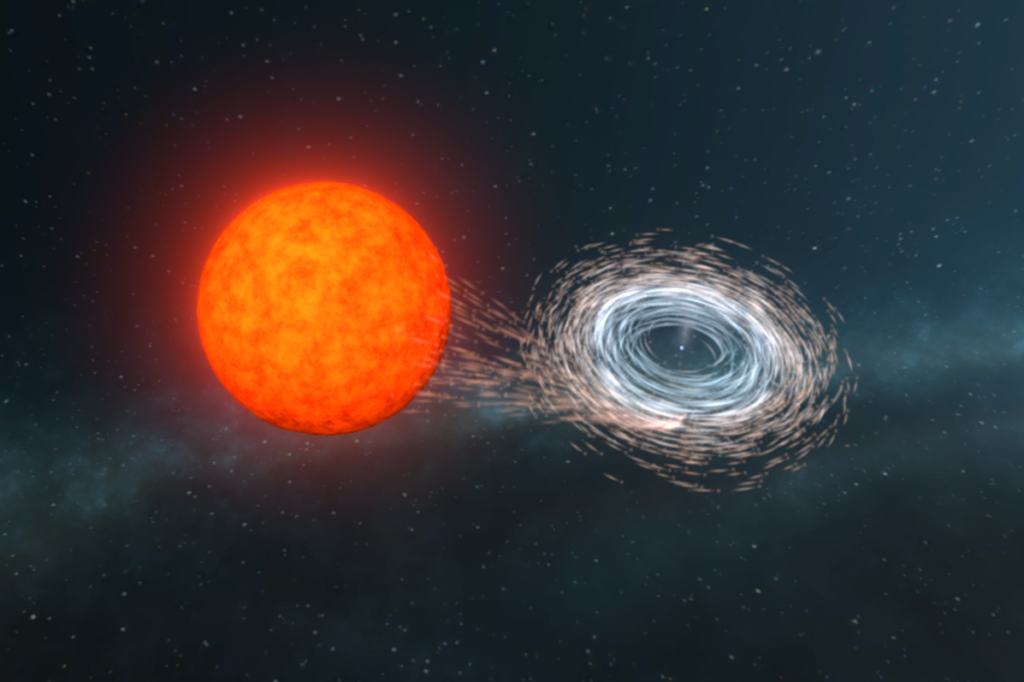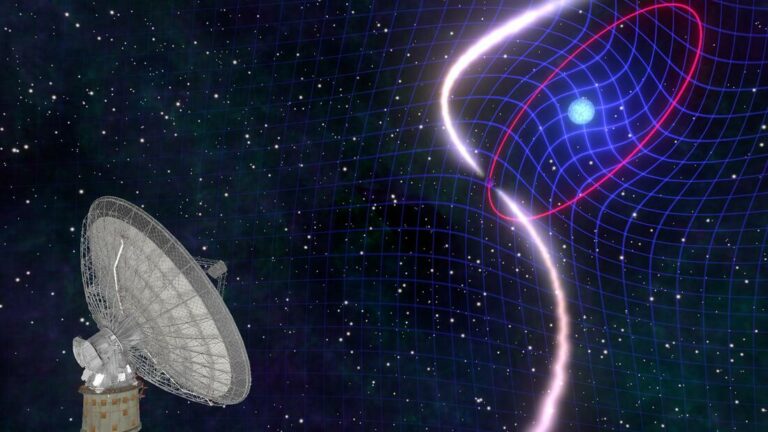A celestial body is detected exerting a gravitational force on space-time 100 million times greater than that of Earth
According to general relativity, any object in rotation will induce frame-dragging and pull the space-time along with itself.
However, in day-to-day life, frame-dragging is almost inconceivable and minimally influential due to its insignificance. But to observe the frame dragging due to Earth’s rotation, one needs special satellites such as the US$750 million Gravity Probe B satellite. These satellites calculate the angular rates of gyroscopes, and one degree is equivalent to one hundred thousand years.
Luckily, the Universe contains many natural examples of gravity where Einstein’s theories can be tested and observed in action.
Our team in the Science magazine study has also found that frame-dragging occurs on a much vaster scale. Thus, using a radio telescope and observing a specific pair of stars rapidly orbiting each other, we were able to study frame-dragging in detail.
The motion of these stars would have caused a lot of confusion during Newton’s era because they move through a curved space-time and can only be explained by using Einstein’s general theory of relativity.

General relativity is the basic framework of the present theory of gravitation and gives a clear picture of the exact motion of the objects like stars, planets or satellites and also tells the agenda of time. One of the least expected predictions of the theory was that spinning objects tend to drag space-time along with them. The strength of this effect is the function of the rotational speed and the size of the rotating object yielding to the stronger gravity.
This principle is even more relevant when it comes to white dwarfs – which are essentially remains of much more massive stars compared to our Sun and which no longer possess any reserves of hydrogen after it has been turned into helium. That is why though the remaining core of a white dwarf stars is the size of the Earth it is many hundreds of thousands of times larger. Also, white dwarfs can spin at an extremely short time, which means that could rotate during the time it takes to read this sentence, while Earth takes 24 hours to rotate once.
The frame-dragging this kind of white dwarf triggers would be 100 million times as potent as the Earth’s. While it is not feasible to physically travel to a white dwarf and launch satellites from its surface, astronomers are fortunate to have an alternative method of studying them: studying pulsars-very young and rapidly rotating neutron stars that are usually in orbit around other stars.
In the early 1990 s the CSIRO’s Parkes radio telescope was used in a discovery of one of a kind stellar pair – a white dwarf and a pulsar. The white dwarf, although only marginally larger than the Earth, has an astonishing 300. 000 times its mass. On the other hand the radio pulsar as large as a city is 400000 times as heavy as the others.
In general, pulsars are much more unique than white dwarfs are when it comes to their properties. It is made up of tightly compressed neutrons and that gives it an extremely high level of density. Moreover, the pulsar which is in study cycle rotates an unbelievable 150 times per minute.
This results into a “light house beam” radio wave which the pulsar sends every minute passing by our vicinity on earth, 150 times. As the described pulsar emits short and powerful pulses of light, by determining the time it takes for these pulses to reach our telescope, as well as the speed of light, we can cover the pulsar’s orbit around the white dwarf. By this approach, therefore, it has been found out that these two stars must be in a mutual orbit that takes less than 5 hours to complete.
The two stars are actually called PSR J1141-6545 formally and this is one of the best natural laboratories. From the year 2001, we have been conducting several visits in a year to the parkes observatory to witness and document the orbital behavior of this system. These observations have captured a number of gravitational effects that are in accordance with Einstein’s theory.
It is challenging to track and graph the development of these orbits, although our data is highly accurate. However, based on PSR J1141-6545, which is light years away, approximately several hundred quadrillion miles—a quadrillion being a million billion—our team has ascertained that it rotates 2. It zips around 532,720,304,604 times per second and also has a tumbling orbit in space.
This means that the orbital plane of this star pair is not static but rather tilted as it undergoes constant rotation.
How did this system develop?
The core of a more massive star becomes a white dwarf after its explosion, but the second star in this system loses matter before exploding.

In this process the infalling material creates a disk around the white dwarf and slowly builds up the white dwarf’s spin rate over a few thousand years and the white dwarf spins every few minutes.
In exceptional cases such as this one, the second star may go supernova and leave behind a pulsar. The rapidly spinning white dwarf alters the pulsar’s orbital plane because it drags space-time with it. This discovery of orbital tilting was made by careful observation and subsequent analysis of the movements of the planets.
Einstein himself did not believe that his ideas concerning space and time would ever be directly measured. However, the last decade has seen a remarkable progress in extreme astrophysics such as the identification of gravitational waves and imaging of the shadow of a black hole using a large network of telescopes. These discoveries were made through the use of advanced equipments which cost billions of dollars.
Luckily, old telescopes such as the 50-year-old Parkes telescope is still being used to make general relativity researches, not to mention the relentless work of generations of graduate students.
Do not forget to share your opinion with us to provide you with the best posts !




0 Comments